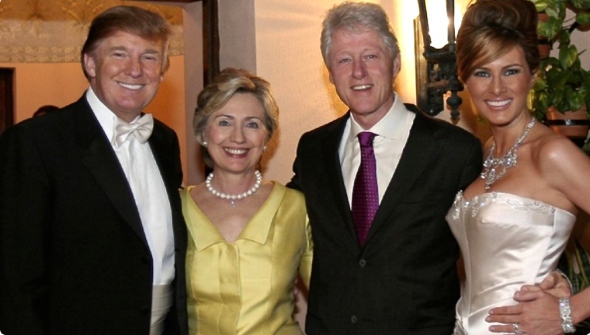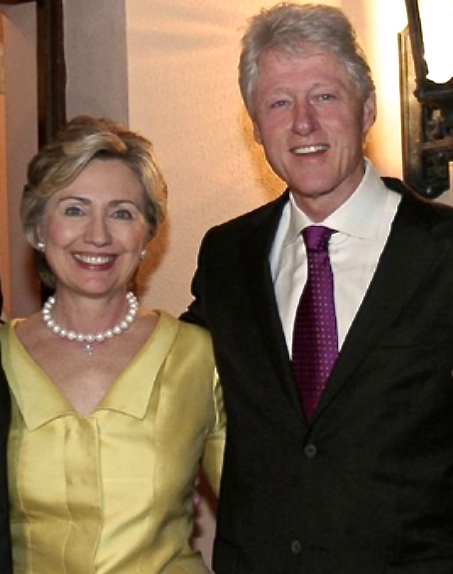How cropping photos can change the editorial content of a photograph
Posted: December 20, 2015 Filed under: Journalism Training, Rick's Rules, U.S. politics | Tags: 2016 presidential race, cropping, Donald Trump, Journalism Training, media bias, multimedia journalism, Nancy Pelosi, photo composition, photo cropping, photo editing, photography, presidential election, White House 1 Comment
Marital bliss: This photograph from Donald Trump’s latest wedding is fraught with political overtones.
Photography captures reality.
Or does it?
Yes, a high-quality photograph that follows my 25 rules of photo composition can be a major asset for your multimedia journalism report.
But a photograph is not necessarily objective reality. Why?
Cropping.
As you edit the photograph, you are making editorial decisions: What part of the photo is most important or newsworthy? (That is different than editing decisions based on attractiveness.)
Here are two examples: One benign, one politically charged.
I took the first photo in my final day on the White House beat, Sept. 2, 2013. It shows House Democratic leader Nancy Pelosi speaking to a group of reporters outside the West Wing entrance (also known as “the Stakeout”). The second photo is a wedding snapshot featuring Bill and Hillary Clinton at Donald Trump’s most recent wedding.

Nancy Pelosi at the Stakeout. The viewer’s eye focuses on the media scrum.

The edited photo focuses on Nancy Pelosi.

The original image: The Trumps and Clintons are all smiles at Donald Trump’s latest wedding.

Edited photo #1: That was then, this is war: Hillary and Donald look happy together. That’s not the way they’re acting in the heat of the presidential race.

Edited photo #2: Editing out the Trumps, this could be any of the tens of thousands of Clinton family photos taken over the decades.

Edited photo #3: Editing out the spouses, this version looks like Bill Clinton is enjoying his time with Mrs. Trump. It emphasizes their left hands meeting along her waist.
The Trump-Clinton wedding photo is fraught with political overtones. Some of Trump’s 2016 Republican presidential campaign rivals would like to remind voters of his bipartisan past and his longtime coziness with the Clintons. The unedited photo is incontrovertible evidence that the two families were close enough that they were all smiles together in the not-so-distant past.
By focusing on Donald and Hillary, the photo editor chooses to highlight the 2016 rivalry, without the spouses. It’s Hillary vs. Donald. All smiles then. All insults now.
By editing out the Trumps, this is an unexceptional photo of Bill and Hillary Clinton smiling for the cameras. Little news value.
By editing out Donald and Hillary, the photo focuses on Bill Clinton with his arm around an attractive woman. Her left hand touches his, prompting the viewer to reach her/his own conclusion about the body chemistry.
The takeaway lesson: When you are editing photos for content, think about how your cropping decisions change the meaning of the image in the eyes of your audience. Are you sending the message you want to send? Are you fairly reflecting reality? Are you being fair to the subjects in the photo?
If you are a professional photo editor, the answer to all of the questions should be yes.
Recent Comments